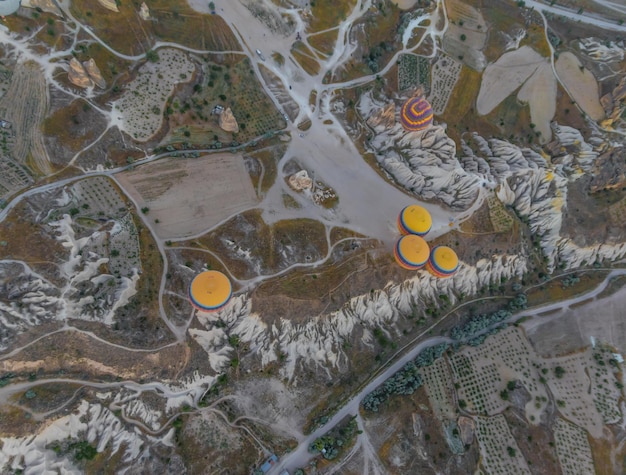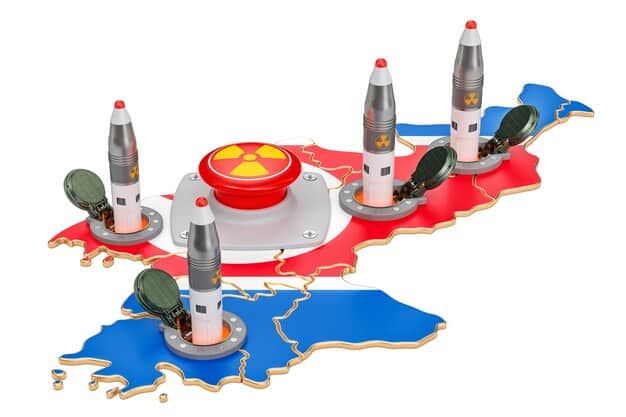North Korea’s Nuclear Ambitions: Threat Assessment & US Response

North Korea’s Nuclear Ambitions: Assessing the Threat to US Allies and Potential US Response Scenarios involves evaluating the current and future dangers posed by North Korea’s nuclear program and hypothesizing potential reactions from the United States to mitigate the risks and ensure regional stability.
The escalating nuclear ambitions of North Korea pose a significant security challenge, demanding a comprehensive assessment of the threats to US allies and potential response strategies from the United States. Understanding the nuances of North Korea’s Nuclear Ambitions: Assessing the Threat to US Allies and Potential US Response Scenarios is crucial for informing policy decisions and maintaining stability in the region.
Understanding North Korea’s Nuclear Program
North Korea’s pursuit of nuclear weapons has been a persistent concern for the international community. Initially starting in the 1950s, the program gained momentum in the 1980s, leading to significant advancements despite international sanctions and diplomatic efforts. A thorough understanding of the program’s history and current capabilities is essential to assessing the risks it poses.
Historical Overview and Key Milestones
The origins of North Korea’s nuclear program can be traced back to the country’s first nuclear reactor, provided by the Soviet Union in the 1950s. However, the active pursuit of nuclear weapons began in earnest following the collapse of the Soviet Union and the subsequent economic hardships faced by North Korea.
- **1980s:** North Korea begins its own nuclear research program at Yongbyon.
- **1993:** North Korea announces its withdrawal from the Nuclear Non-Proliferation Treaty (NPT).
- **2006:** North Korea conducts its first nuclear test.
- **2009:** Second nuclear test is conducted, leading to increased international condemnation.
Current Nuclear Capabilities
Today, North Korea possesses a substantial arsenal of nuclear weapons and a range of delivery systems, including short-range, medium-range, and intercontinental ballistic missiles (ICBMs). The exact size of its nuclear stockpile is uncertain, but estimates suggest it could range from 20 to 60 warheads. The advancement in delivery systems has drastically increased the concerns of immediate threats to US Allies in the region.

North Korea’s continued pursuit of nuclear technology and missile development demonstrates its ambition to become a major player on the global stage, further increasing its impact on international relations. The threat is multifaceted, comprising not only the existence of nuclear weapons but also the potential for proliferation and regional instability.
The Threat to US Allies in Northeast Asia
The primary concern for US allies in Northeast Asia—South Korea and Japan—stems from their proximity to North Korea and the potential for direct strikes. These countries have maintained strong alliances with the US, relying on American support and military presence as a deterrent against North Korean aggression.
South Korea: A Nation Under Threat
South Korea is perhaps the most vulnerable to North Korean aggression due to its close proximity and shared border. The capital city, Seoul, is located within easy range of North Korean artillery and missiles. The threat is exacerbated by the complex political and military dynamics on the Korean Peninsula.
- Direct military attacks and artillery bombardment are possible
- The continuous cyber attacks and espionage attempt has kept South Korea and US forces on high alert.
- The risk of nuclear fallout and the potential for large-scale destruction raise dire concerns.
Japan: A Key US Ally at Risk
Japan, another key US ally in the region, is also within range of North Korean missiles. Although geographically further from North Korea than South Korea, Japan’s strategic importance and close relationship with the US make it a potential target. The threat to Japan involves both direct military attacks and the broader implications for regional security.
- Missile tests and potential for nuclear strikes pose an immediate and critical risk.
- Geopolitical instability in the region could disrupt Japan’s economic and security interests.
- The psychological impact of North Korea’s nuclear capabilities on the Japanese population is significant.
The United States has committed to defending its allies, providing military support and security guarantees. However, the nature of the threat requires continuous reassessment and adaptation of defense strategies. The US must balance its commitment to its allies with the need to de-escalate tensions and pursue diplomatic solutions.

Potential US Response Scenarios
To address the threat posed by North Korea’s nuclear ambitions, the US has several potential response scenarios, ranging from diplomatic engagement to military deterrence. Each option carries its own set of risks and benefits. Understanding these scenarios is vital for formulating an effective long-term strategy.
Diplomatic Engagement
Diplomatic engagement represents the most peaceful approach to resolving the crisis. This involves direct negotiations with North Korea, as well as multilateral efforts involving other key players, such as China, South Korea, and Japan. While diplomatic solutions are desirable, they require a willingness from North Korea to engage constructively. The outcomes of such negotiations are always uncertain, requiring contingency planning and adaptive strategies.
Economic Sanctions and Pressure
Economic sanctions are a key tool in pressuring North Korea to abandon its nuclear program. These sanctions aim to restrict North Korea’s access to resources and technologies needed for its weapons development. However, their effectiveness depends on consistent and comprehensive enforcement, which requires cooperation from all countries involved in trade with North Korea. The balance may be hard due to some nations choosing profit over peace with North Korea.
Economic sanctions can cause hardships for the North Korean population, potentially leading to instability. Additionally, the regime may find ways to circumvent these restrictions, reducing their overall impact. Therefore, a multi-faceted approach combining economic pressure with diplomatic engagement and military deterrence is often necessary.
Military Deterrence and Defense Measures
Military deterrence involves maintaining a strong military presence in the region to discourage North Korea from taking aggressive actions. This includes deploying strategic assets, such as aircraft carriers, submarines, and missile defense systems, as well as conducting joint military exercises with allies. While military deterrence can be effective in preventing immediate attacks, it also carries the risk of escalating tensions and triggering an armed conflict.
- Strengthened defense posture and show of force to prevent North Korean aggression.
- Coordinated military planning with South Korea and Japan to bolster defense capabilities.
- Clear communication of consequences for any North Korean attacks.
The U.S. must continuously adapt in coordination with allies and partners, seeking ways to mitigate the threat of North Korea’s nuclear ambitions, balancing military readiness, economic pressure, and diplomatic engagement.
The Role of China in Addressing the Crisis
China’s role in addressing the North Korean nuclear issue cannot be overstated due to its close economic and political ties with North Korea. As North Korea’s largest trading partner and historical ally, China wields significant influence over the regime. A collaborative effort with China is essential to achieving any lasting resolution.
Economic and Political Influence
China accounts for a substantial portion of North Korea’s international trade, providing a lifeline for the country’s struggling economy. China’s political support also lends legitimacy to the North Korean regime, buffering it from international isolation. The effectiveness of international sanctions largely depends on China’s willingness to enforce them rigorously. Without China’s cooperation, sanctions are likely to be less impactful, and North Korea may continue to pursue its nuclear ambitions.
China’s Strategic Interests
China’s strategic interests in the region are complex. While China opposes North Korea’s nuclear weapons program, it also seeks to avoid instability on the Korean Peninsula, which could lead to a refugee crisis or a US-backed regime on its border. China’s approach to North Korea reflects a balance between these competing interests. It is imperative that negotiations include discussions on these factors to align common goals.
Areas for Cooperation and Conflict
Cooperation between the US and China on the North Korean issue is possible in several areas, including enforcing sanctions, promoting diplomatic engagement, and coordinating security measures. However, disagreements over long-term goals and strategies can lead to conflict. For example, the US may prioritize denuclearization at all costs, while China may focus on maintaining stability and preventing conflict. Finding common ground is crucial for forging a united front against North Korea’s nuclear ambitions.
Navigating the complexities of China’s role requires a nuanced and pragmatic approach. The US must engage in open and honest dialogue with China, acknowledging both the areas of cooperation and potential points of conflict. This collaborative approach will enhance the effectiveness of the overall strategy to address the North Korean threat.
Cyber Warfare and Espionage: An Underrated Aspect
Besides physical military might and nuclear capabilities, North Korea utilizes cyber warfare and espionage to fund its nuclear program and gather crucial intelligence. These covert activities present a significant, yet often underestimated, aspect of the overall threat.
Funding Nuclear Ambitions
North Korea has become increasingly adept at using cyberattacks to generate revenue, which is then channeled into its nuclear and missile programs. These attacks range from hacking financial institutions to stealing cryptocurrency. By generating revenue through illicit cyber activities, North Korea circumvents international sanctions and maintains a steady flow of funds for its weapons programs. Countering these cyber activities requires international cooperation and improved cybersecurity measures.
Intelligence Gathering
Espionage is another critical component of North Korea’s strategy. The regime dedicates significant resources to gathering intelligence on its adversaries, including the US and its allies. This intelligence is used to inform strategic decision-making, identify vulnerabilities, and develop countermeasures. Protecting against espionage requires enhanced security protocols and counterintelligence efforts. The regime’s intelligence division is responsible for data mining and digital hacking. This division is in charge of acquiring plans as well as methods to further their goals.
Cyber Warfare as a Tool of Coercion
Cyber warfare is not just about funding and intelligence; it also serves as a tool of coercion and intimidation. North Korea has been known to launch cyberattacks against its adversaries to disrupt critical infrastructure, spread propaganda, and sow discord. The use of cyberattacks as a means of coercion adds another layer of complexity to the overall threat posed by North Korea. Strengthening cybersecurity defenses and developing effective response strategies are essential for deterring and mitigating these cyber threats.
To effectively manage the North Korean threat, it is crucial to recognize and address the country’s cyber warfare and espionage capabilities. By strengthening international cooperation, improving cybersecurity measures, and enhancing counterintelligence efforts, the international community can limit North Korea’s ability to fund its nuclear program and gather intelligence, thereby reducing the overall threat.
The Future of North Korea’s Nuclear Program
Predicting the future trajectory of North Korea’s nuclear program is complex and fraught with uncertainty. Several factors will shape its development, including changes in leadership, shifts in regional dynamics, and the effectiveness of international efforts to curb its ambition. Understanding these variables is crucial for informing long-term strategies.
Potential for Further Advancement
North Korea has demonstrated a persistent commitment to advancing its nuclear capabilities, despite international pressure and sanctions. It is likely to continue developing more advanced weapons and delivery systems, posing an increased threat to the US and its allies. Monitoring and assessing North Korea’s technological advancements are essential for staying ahead of potential threats. This needs to be done proactively in order to mitigate damage in a timely manner.
Internal Instability and Regime Change
Political instability within North Korea could lead to unpredictable outcomes, including a potential collapse of the regime or a shift in its policies. A stable transition of power could open new opportunities for dialogue and denuclearization. The involvement of South Korea in leadership transitions is imperative to ensure safety and peace within the region. International community must remain vigilant and prepared for any sudden shifts in the domestic landscape.
The Role of International Negotiations
The future of North Korea’s nuclear program may depend largely on the success or failure of international negotiations. Sustained diplomatic efforts, coupled with effective economic pressure, could persuade North Korea to abandon its nuclear ambitions. However, progress hinges on a willingness from all parties to engage in constructive dialogue and make meaningful concessions. The progress must be in line with international standards of human rights and fair governance.
The future of North Korea’s nuclear program remains uncertain, as no one party can be completely certain of what their goals consist of. By monitoring and assessing technological advancements, remaining prepared for both sudden and gradual regime shifts, and maintaining consistent diplomatic efforts the international community can seek to minimize the threats.
| Key Point | Brief Description |
|---|---|
| ☢️ Nuclear Program Origins | Started in 1950s, accelerated post-Soviet Union. |
| 🛡️ Threat to Allies | South Korea and Japan are at heightened risk. |
| 🤝 China’s Role | Significant economic and political influence. |
| 💻 Cyber Warfare | Used for funding and intelligence gathering. |
Frequently Asked Questions
▼
North Korea initiated this program to enhance its security, deter external threats, and gain international recognition. This decision stems from historical conflicts and persistent security concerns.
▼
North Korea is believed by most experts to already possess working nuclear weapons while continually working to enhance the range and accuracy of their delivery systems.
▼
South Korea and Japan face immediate risks due to proximity and strategic alignment with the US, including potential nuclear strikes and regional instability.
▼
The US strategy generally mixes diplomatic approaches and military deterrence, reinforced by strong allied partnerships, to hinder North Korea’s nuclear developments.
▼
China significantly influences North Korea due to its economic and political ties, affecting the enforcement of sanctions and stability in the region.
Conclusion
In conclusion, North Korea’s nuclear ambitions present a complex and evolving threat that demands a multifaceted response. By understanding the nuances of North Korea’s program, assessing the vulnerabilities of US allies, and considering potential response strategies, the international community can work towards a more secure and stable future. Sustained diplomatic efforts, coupled with effective deterrence measures, are essential for mitigating the risks posed by North Korea’s nuclear aspirations.





